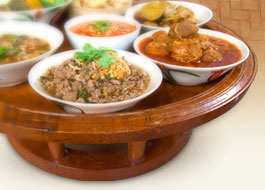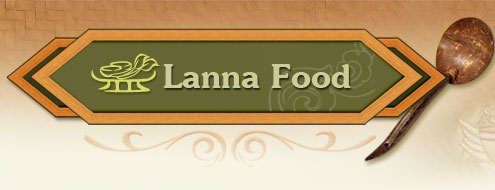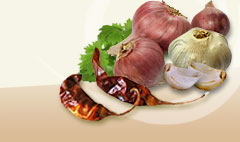Lemongrass |
|
|
 | Cymbopogon sitratus (DC) Stapf |
|
| |
 | Gramineae |
|
| |
 | Lepine, Lemongrass, West Indian lemongrass |
|
| |
 | Chak khai, Cha khai (Northern); Kha hom (Shan); Ngio (Mae Hong Son) (Rattana Phromphichai, 1999); Takhrai kaeng (Central); Le-kroi, Ho-wo tapo (Karen-Mae Hong son); Khai, phai lek (South). Hua khai ling ((Khmer-Prachinburi); Choet-kroe (Khmer-Surin). (Kanchana Diwiset, et al., 1999, p. 75) |
|
| |
 | Perennial, 1 m. high, cylindrical stalk, hard, smooth, covered with wax, hairy internode. Leaves simple,, acicular, oblong, rough surface, hard midrib, hairy edge, green, 2-3 ft. long; inflorescence sprinkled with stems bracelet for each pair. (Kanchana Diwiset, et al., 1999, p. 75) |
|
| |
 |

Used in many Lanna dishes, e.g. kaeng, yam, to get rid of unpleasant odor, grown most in home gardens (Rattana Phromphichai, 1999, 1454) |

Stimulates gastric activity, cool tonic, antifungal, antibacterial, reduce fever, good for kidneys, increases sweating, rhizome to leaves contain citronella oil used as mosquito repellant and fragrant agent in cosmetic products. (Phak Phuen Ban A-han Phuen Mueang, 2007, p. 44)
Lanna folk medicine uses it to treat gallstones, heartburn, mouth sores and cramps.
Modern traditional medicine uses oil from the leaves to enhance the aroma of food, soap, as a tonic, to stimulate gastric system and reduce high blood pressure (Chiradet and Aranya Manosoi, 1994, p. 101)
|
|
| |
 | All year round |
|
| |
 |
Kanchana Diwiset, et al. (1999). Phak Phuen Ban Phak Klang. Kanchana Diwiset, Ed. Bangkok: Project for Text Development, Institute of Traditional Thai Medicine. (in Thai). Chiradet and Aranya Monosoi. (1994). Lanna Pharmaceutics: Lanna Herbal Medicine Formula. Bangkok : Institute of Traditional Thai Medicine. (in Thai). Phak Phuen Ban A-han Phuen Mueang . (2007). Bangkok: Fa Aphai Co. Ltd.. (in Thai). Rattana Phromphichai. (1999). Chak Kha. In Saranukrom Wattanatham Thai Phak Nuea (Vol. 3, p. 1454). Bangkok: The Siam Commercial Bank Foundation for the Encyclopedia of Thai Culture. (in Thai). Wut Wuthithamwet. (1997). Saranukrom Samunphrai: Ruamlak Phesatchakam Thai. Bangkok : Odean Store. (in Thai). |
|
| |
|
|




